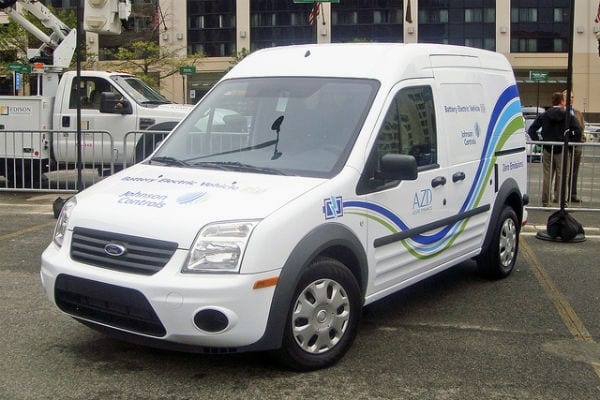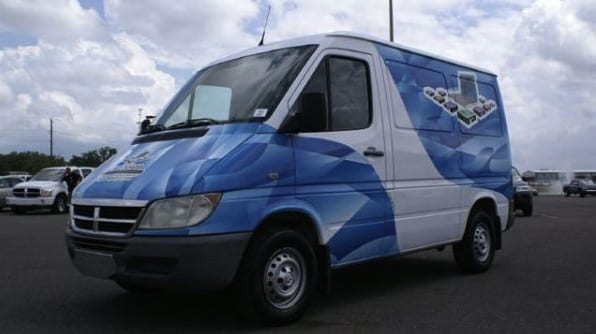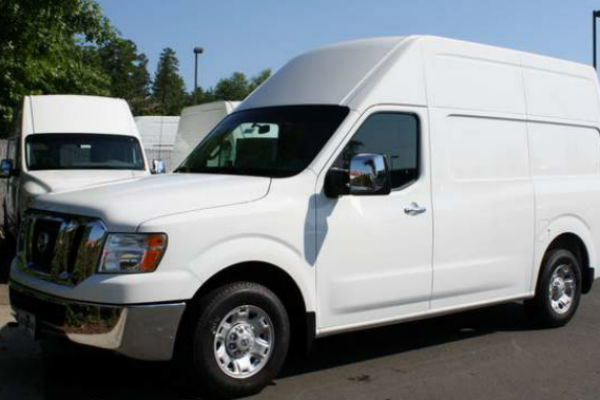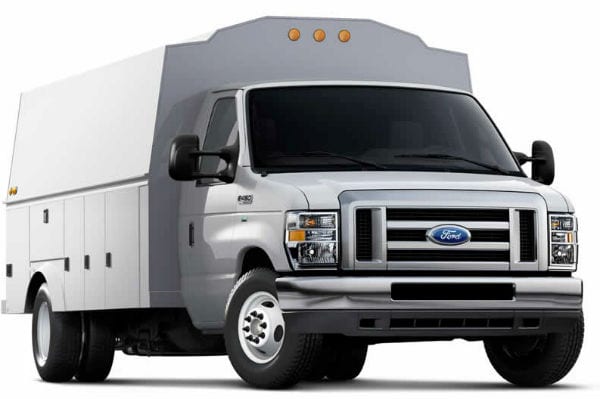So, you have the tools, you have the technician — now what about the van? Yes it’s tempting to pimp your ride, especially when you consider it as the billboard-on-wheels that it is. But field service managers, alas, must consider functionality, too.
How do you determine the the right van that will meet your needs, doesn’t cost you unnecessary overhead, and will add some flash to your fleet? Here’s a look at five popular field-service vehicles that can tackle almost any job.
Compact Vans

- The Standard: Ford Transit Connect
- The Heft: 5,005 lbs (gross vehicle weight rating)
- The Muscle: 1,600 lbs (max payload capacity)
- The Size: 129.6 cubic feet (cargo volume)
- The Pull: not applicable (max trailer capacity)
- The Cost: From $23,200
- The Pump: 21 mpg city/27 hwy/23 combine
- The Goods: Best for security systems, wireless/cable/telecommunications, light electrical and light automotive parts delivery.
Being the smallest fleet van, you probably aren’t going to turn heads with “Damn, look at that big van!” comments. But there are two key advantages to compact vans: maneuverability and fuel economy. It’s a good fit for vans that must operate in tight urban spaces, such as parking garages, and don’t haul heavy gear. And hey, you can easily spruce it up with snazzy vehicle wraps.
Half-Ton Vans

- The Standard: Chevrolet Express 1500
- The Heft: 7,300 lbs (gross vehicle weight rating)
- The Muscle: 2,287 lbs (max payload capacity)
- The Size: 239.7 cubic feet (cargo volume)
- The Pull: 7,000 lbs (max trailer capacity)
- The Cost: From $28,940
- The Pump: 15 mpg city/20 hwy/17 combined
- The Goods: Best for HVAC, electrical, audio-visual and light automotive parts delivery.
Yes, these are good getaway vans for heist movies, but there’s more to them. Half-ton vans are for those who need a bit more space — they offer nearly twice the space of the compact van — but don’t need a ton of power (buyers can opt for a more fuel-sipping V-6 engine). It’s best-suited for companies that haul bulky cargo, yet relatively lightweight loads.
Three-Quarter-Ton Vans

- The Standard: Freightliner Sprinter 2500
- The Heft: 8,550 lbs (gross vehicle weight rating)
- The Muscle: 3,452 lbs (max payload capacity)
- The Size: 318.0 to 547.0 cubic feet, depending on wheelbase and roof height (cargo volume)
- The Pull: 5,000 lbs (max trailer capacity)
- The Cost: From $36,290
- The Pump: EPA exempt; 24 mpg combined, according to Mercedes
- The Goods: Best for HVAC, mechanical, plumbing, electrical, carpet-cleaning, disaster restoration, appliance repair.
Now we’re getting into some heavy stuff. The three-quarter tons give you a full-size cargo area but with approximately 1,000 pounds more payload capacity than the half-ton van. Unlike the half-ton models, which offer only one wheelbase length and roof height, the three-quarter-ton vans present fleet managers with multiple lengths and (with some automakers) height options. Overall, this size van fits the widest range of field service applications because it strikes a balance between cargo volume, hauling capacity, fuel efficiency, and acquisition cost. Think of all the interior shelving possibilities with this space, too!
One-Ton Vans

- The Standard: Nissan NV 3500HD
- The Heft: 9,900 lbs (gross vehicle weight rating)
- The Muscle: 3,747 lbs (max payload capacity)
- The Size: 234.1 to 323.1 cubic feet, depending on roof height (cargo volume)
- The Pull: 9,500 lbs (max trailer capacity)
- The Cost: From $28,650
- The Pump: EPA exempt
- The Goods: Best for surveying, general construction, sheet metal contracting, appliance repair, carpet-cleaning, disaster restoration.
Although the payload capacity of the one-ton is only a few hundred pounds greater than three-quarter ton, if the van is expected to operate at max loads frequently, you’ll want the stronger suspension, larger brakes, and greater power of the one-ton van. This size also works well for applications that require hauling full loads inside the van, while also pulling a heavy trailer. You’ll be paying a pretty penny for gas, though.
Cutaways

- The Standard: Ford E-Series 450 Cutaway
- The Heft: 14,500 lbs (gross vehicle weight rating)
- The Muscle: 9,033 lbs (max payload capacity; does not include weight of truck body)
- The Size: TBD (contingent upon body dimensions)
- The Pull: TBD (contingent upon weight of body)
- The Cost: From $26,935
- The Pump: EPA exempt
- The Goods: Good for heavy auto-parts delivery, office equipment service, medical equipment service, landscaping.
Now we’re talking big. Cutaway chasses are shipped from the factory as “incomplete vehicles,” with the front of the cab resembling a full-size van, while the rear of the cab, just behind the driver and passenger seats, is literally “cut away” and left exposed. This allows for the installation of specialty truck bodies, such as cargo boxes and enclosed utility bodies. Cutaways are available with body lengths ranging from 10 to 16 feet, offering substantially greater payload capacity and cargo volume than even the most capable one-ton cargo vans. And in terms of design, the possibilities are unlimited, like these extreme Japanese vans.
The Bottom Line
What exactly do your vans haul? What are the total cargo weight and dimensions when fully loaded? Will the van pull a trailer? Answers to questions like these will give you the framework you need to select the optimal size van for your fleet — and your company’s bottom line.
More: Four Reasons Fleet Managers Might Switch to the New Ford Transit.
Click here to download a free whitepaper, “Five Steps to Make Field Service Profitable.”

Share this: